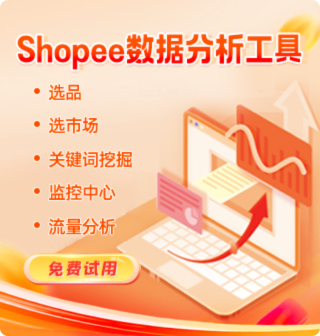-
用户195****7787
Shopee Sellers: A Comprehensive Guide to Succeeding on One of Southeast Asia’s Largest E-commerce Platforms
Shopee has become one of the most influential e-commerce platforms in Southeast Asia and beyond, offering vast opportunities for entrepreneurs, small businesses, and large brands. Behind the bustling marketplace lies a thriving community of Shopee sellers who contribute to the platform’s growth by listing millions of products daily. This article explores who Shopee sellers are, how they operate, the challenges they face, and practical strategies to optimize business performance on Shopee.
1. Who Are Shopee Sellers?
Shopee sellers are a diverse group including:
Individual entrepreneurs and home-based businesses: Many sellers start with small inventories, often focusing on niche products or handmade goods.
Small and Medium Enterprises (SMEs): SMEs use Shopee to expand market reach without heavy upfront investment in physical stores.
Large retailers and brands: Well-known brands and distributors set up official shops (Shopee Mall) to engage consumers directly.
Cross-border sellers: Businesses from outside Southeast Asia leverage Shopee’s cross-border selling tools to tap into regional markets.
Sellers operate primarily via Shopee's Seller Center, an all-in-one portal to manage listings, orders, customer interactions, and performance metrics.
2. Getting Started as a Shopee Seller
Registration:
- Signing up is straightforward and free. Sellers provide basic information, bank details, and agree to Shopee’s terms and policies.
- Verification processes may be required for higher-tier accounts or official brand stores.
Product Listing:
- Sellers create product listings with titles, detailed descriptions, high-quality images, and relevant keywords to enhance search visibility.
- Categorization is crucial for discoverability; sellers must match products accurately within Shopee’s taxonomy.
Pricing and Promotions:
- Competitive pricing is vital in Shopee’s price-sensitive marketplace.
- Sellers can offer discounts, vouchers, bundle deals, and participate in platform-wide campaigns such as 9.9, 11.11, and 12.12 sales.
3. Core Tools and Features for Sellers
Seller Center Dashboard: Central hub to track sales, manage inventory, process orders, and view analytics.
Advertising Solutions: Shopee Ads help sellers increase product visibility via keyword ads, discovery ads, and targeted campaigns.
Flash Sales and Campaign Participation: Sellers can apply to participate in flash sales events to boost traffic and sales volume.
Live Streaming: Shopee Live enables sellers to showcase products, interact with customers in real time, and increase conversion rates.
Shopee University: A learning platform offering webinars, tutorials, and guides to help sellers improve performance and marketing skills.
4. Logistics and Fulfillment
Efficient delivery is a key success factor for Shopee sellers.
Shopee Logistics Service (SLS): In selected markets, Shopee offers integrated logistics solutions to simplify shipping and tracking.
Fulfillment by Shopee (FBS): Sellers can store products in Shopee’s warehouses, allowing faster shipping and streamlined returns.
Third-party Couriers: Sellers may also use external courier services but must ensure timely dispatch and delivery.
Maintaining high fulfillment rates and timely shipping enhances seller ratings and buyer satisfaction.
5. Performance Metrics and Customer Service
Shopee closely monitors seller performance through various metrics:
Order Fulfillment Rate: Percentage of orders shipped on time.
Cancellation Rate: Low cancellation rates are essential to maintain credibility.
Response Time: Prompt replies to buyer inquiries improve trust and conversion.
Customer Ratings and Reviews: Positive feedback directly influences search ranking and sales.
Sellers must resolve disputes professionally and comply with Shopee’s policies to avoid penalties or suspension.
6. Common Challenges Faced by Shopee Sellers
High Competition: Thousands of sellers often compete in the same product category, making differentiation crucial.
Price Wars: Competing on price alone can erode margins. Value-added services or bundling may help maintain profitability.
Inventory Management: Overstocking ties up capital, while stockouts hurt seller ratings and sales momentum.
Adapting to Platform Changes: Shopee frequently updates policies, algorithms, and features, requiring sellers to stay informed and adaptable.
7. Advanced Tips and Strategies for Shopee Sellers
Optimize Product Listings:
- Use clear, high-resolution images with multiple angles.
- Write precise, engaging descriptions highlighting unique selling points and specifications.
- Research and incorporate relevant keywords to improve search ranking.
Leverage Data and Analytics:
- Analyze sales trends and customer behavior using Seller Center reports.
- Adjust inventory and marketing strategies based on data insights.
Engage Customers Proactively:
- Use Shopee Chat to answer pre-sale and post-sale queries swiftly.
- Encourage satisfied customers to leave reviews.
- Create loyalty by offering exclusive vouchers to repeat buyers.
Participate in Platform Campaigns:
- Plan inventory and pricing around Shopee’s mega sales to capitalize on increased traffic.
- Utilize Shopee’s advertising tools judiciously to boost visibility during peak periods.
Consider Cross-Border Opportunities:
- Explore Shopee’s cross-border selling options to reach customers in other Southeast Asian countries.
- Understand customs, shipping costs, and regulations in target markets.
8. Case Study: Successful Shopee Seller Example
Consider a small fashion accessories seller who started with a limited product line. By consistently uploading quality images, running promotions during Shopee’s sales events, and engaging with customers through Shopee Live, the seller grew their monthly revenue fivefold within one year. The seller also leveraged Shopee Ads to target specific demographics, boosting visibility and conversion rates.
This example illustrates the importance of combining product quality, marketing savvy, and customer service to thrive on Shopee.
Conclusion
Shopee sellers form the backbone of the platform’s dynamic marketplace. From individual entrepreneurs to established brands, sellers have access to a powerful suite of tools designed to grow and manage their online businesses effectively. Success requires more than just listing products—it demands strategic pricing, marketing, excellent customer service, and adaptability to changing market conditions.
For those willing to invest time and effort, Shopee offers tremendous growth potential in Southeast Asia’s burgeoning e-commerce ecosystem. Understanding the operational nuances and applying practical strategies can help sellers stand out, increase sales, and build lasting customer relationships.

